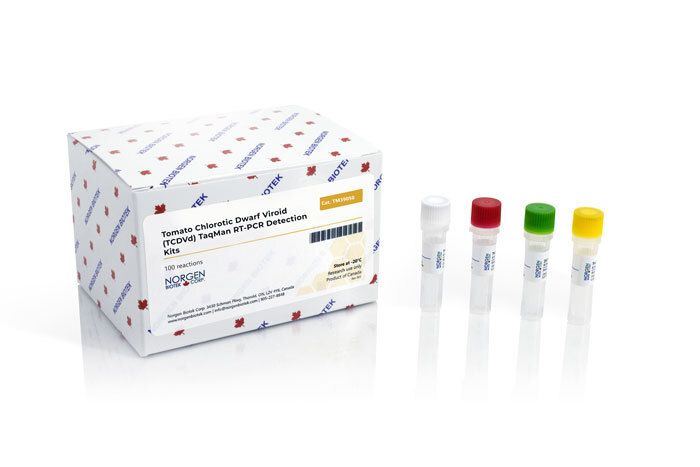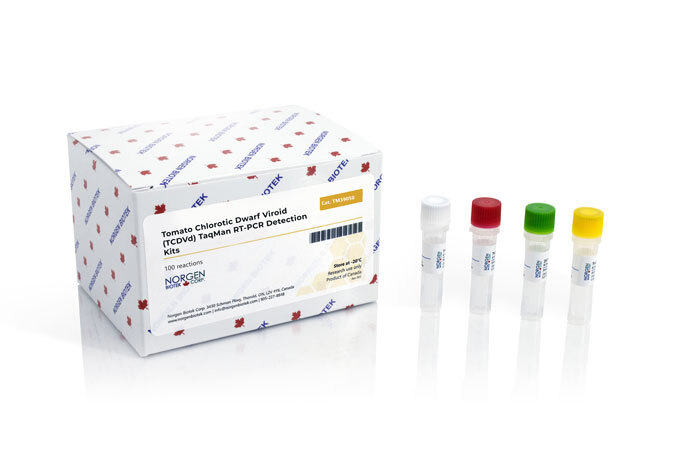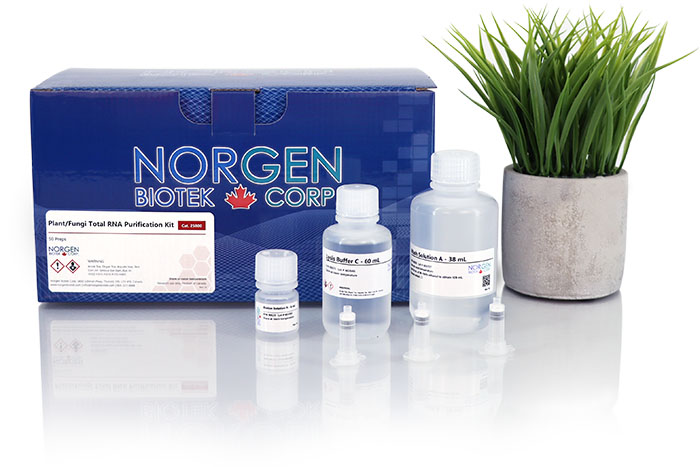Tomato Chlorotic Dwarf Viroid (TCDVd) TaqMan RT-PCR Detection Kits

For research use only and NOT intended for in vitro diagnostics.
Tomato Chlorotic Dwarf Viroid (TCDVd) TaqMan RT-PCR Detection Kits
Register today to receive an exclusive 15% off* on your first order.
Features and Benefits
- Detection kits for the TCDVd
- Available in TaqMan format for analysis
Tomato Chlorotic Dwarf Viroid (TCDVd) is a viroid which causes disease in both field and green-house tomatoes. The viroid is a single-stranded RNA molecule consisting of 300 nucleotides, and is closely related to the Potato Spindle Tuber Viroid. Infected tomato plants show different symptoms depending on the tomato variety, age of the plant, plant vigour and climatic conditions. Some symptoms of TCDVd infection include stunting, overall bunchiness, reduced leaf and fruit, leaf chlorosis, downward bending of leaves and even death of plants. TCDVd has been detected on tomato plants in Europe, Canada and the United States. The detection of TCDVd infection by symptoms is challenging since many other viroids and viruses can produce similar symptoms. Therefore, detection using PCR is the most effective method available.
Click to expand options
- Ready to use format, including Master Mix for the target and PCR control to monitor for PCR inhibition and validate the quality
- Specific Primer and Probe mix for the pathogen/virus/viroid of interest
- Primer and Probe mix
- Positive and negative control to confirm the integrity of the kit reagents
- Specific Primer/Probe mix and Positive Control for the pathogen/virus/viroid of interest
- Nuclease-free water
- Can be used together with Norgen’s RT-PCR Master Mix (#28113) or customer supplied master mix
For research use only and NOT intended for in vitro diagnostics.
Details
Supporting Data
TaqMan PCR Kit - Figure 1. Example of TaqMan PCR Positive result. Both PCR signals above the baseline from FAM and HEX channel indicate the successful PCR.
TaqMan PCR Kit - Figure 2. Example of TaqMan PCR Negative result. No target DNA was detected in FAM channel but amplification signal from HEX indicates the successful PCR.
TaqMan PCR Kit - Figure 3. Example of TaqMan PCR inhibition result. No signal from both FAM and HEX channel was detected. It is suggested to repeat the sample preparation using recommended kit for DNA purification.
Storage Conditions and Product Stability
All kit components can be stored for 1 year after the date of production without showing any reduction in performance.
All kit components should be stored at -20°C upon arrival. Repeated thawing and freezing (> 2 x) of the Master Mix and Positive Control should be avoided, as this may affect the performance of the assay. If the reagents are to be used only intermittently, they should be frozen in aliquots.
| Component | Cat. TM39050 (100 preps) | Cat. TM39010 (100 preps) |
|---|---|---|
| MDx TaqMan 2X PCR Master Mix | 2 x 700 μL | - |
| TCDVd Primer & Probe Mix | 280 μL | 280 μL |
| TCDVd Positive Control | 150 μL | 150 μL |
| Nuclease-Free Water (Negative Control) | 1.25 mL | 1.25 mL |
| Product Insert | 1 | 1 |


